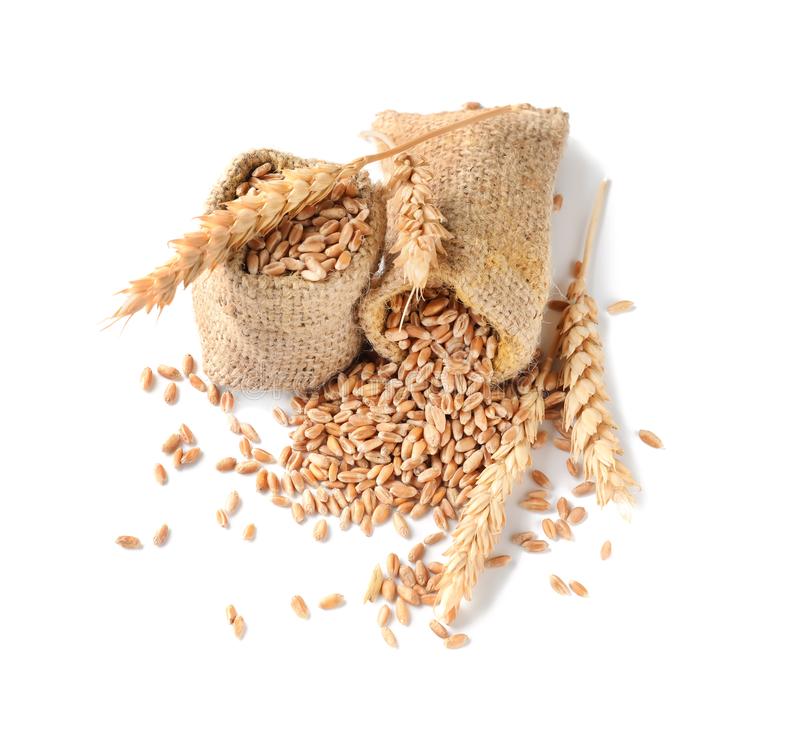
General Information :
Wheat is grown on 13 percent of the cropped area of India. Next to rice, wheat is the most important food-grain of India and is the staple food of millions of Indians, particularly in the northern and north-western parts of the country.
It is rich in proteins, vitamins and carbohydrates and provides balanced food. India is the fourth largest producer of wheat in the world after Russia, the USA and China and accounts for 8.7% of the world’s total production of wheat.
Soil :
Soils with a clay loam or loam texture, good structure and moderate water holding capacity are ideal for wheat cultivation. Heavy soil with good drainage is suitable for wheat cultivation under dry conditions.
TIME OF SOWING:-
Wheat must be sown at the optimum time. Delayed sowing causes a gradual decline in the yield of wheat. The time of sowing is 25 October – November.
SPACING:-
For normal sown crop a spacing of 20 – 22.5 cm between rows is recommended. When sowing is delayed a closer spacing of 15-18 cm should be adopted.
Showing depth:-
The sowing depth should be 4-5 cm.
Method Of Sowing:-
1. Seed drill
2. Broadcasting method
3. Zero tillage drill
4. Rotavator
Seed rate:-
Use seed rate of 45 kg per acre. The seed should be cleaned and graded thoroughly before sowing.
Seed treatment:-
For seed treatment use any one fungicide from the following:
Fungicide/Insecticide Name Quantity (Dosage) Per Kg Seed
Raxil 2 gm
Thiram 2 gm
Vitavax 2 gm
Tebuconazole 2 gm
Irrigatiion:-
Recommended time of irrigations is as below follows in the table:-
NUMBER OF IRRIGATIONS INTERVAL AFTER SOWING
(IN DAYS)
1st irrigation 20-25 days
2nd irrigation 40-45 days
3rd irrigation 60-65 days
4th irrigation 80-85 days
5th irrigation 100-105 days
6th irrigation 115-120 days
First irrigation should be given 20-25 days after sowing. This is crown root initiation stage and moisture stress at this stage will lead to yield loss. At tillering stage within 40-45 days after sowing, apply second irrigation. Third irrigation within 60-65 DAS at late jointing stage. At flowering stage (within 80-85 days) give fourth irrigation. Fifth irrigation at dough stage (within 100-105 DAS).
Uses of wheat:-
Wheat is typically milled into flour which is then used to make a wide range of foods including bread, crumpets, muffins, noodles, pasta, biscuits, cakes, pastries, cereal bars, sweet and savoury snack foods, crackers, crisp-breads, sauces and confectionery (e.g. liquorice).
wheat diseases and their controls:-
Flag smut: It is seed borne disease. Infection spread through wind. It is favoured by cool, humid conditions during flowering period of the host plant. Treat the seed with fungicides like carboxyl (Vitavax 75 WP @ 2.5 gm/kg of seeds), Carbendazim(Bavistin 50 WP)@2.5 gm/kg seed), Tebuconazole(Raxil 2 DS)@1.25 gm/kg of seed) if the disease level in the seed lot is high. If it is low to moderate, treat the seed with a combination of Trichoderma viride@4 gm/kg seed and half the recommended dose of Carboxin(Vitavax 75 WP)@1.25 gm/kg seed.
Powdery mildew: Greyish white powdery growth appears on the leaf, sheath, stem and floral parts. Powdery growth later become black lesion and cause drying of leaves and other parts. When incidence of disease is observed, spray with wettable sulphur@2 gm/ Ltr of water or Carbendazim @400gm/acre. In case of high incidence, spray with Propiconazole@2 ml/ Ltr of water.
Brown rust: It is favoured by warm temperatures (15-30° C) and humid conditions. Brown rust is characterized by reddish- brown spores that occur in oval or elongated pustules. The disease can develop rapidly when free moisture is available and temperatures are near 20° C. Successive generations of urediospores can be produced every 10-14 days if conditions are favourable.
For control of this disease, follow mixed cropping with suitable crops. Avoid excessive use of Nitrogen fertilizer. Spray Zineb Z-78@400 gm/acre or Propiconazole@2ml/Litre of water.
Stripe/Yellow rust: The ideal growth conditions for yellow rust are temperatures of between 8-13° C for spore germination and penetration, and 12-15° C for further development and with free water. The yield penalties from yellow rust in wheat can range from 5% to as high as 30% in high disease pressure scenarios. The pustules of stripe rust, which, contain yellow to orange-yellow urediospores, usually form narrow stripes on the leaves.
For control of this disease, use rust resistant variety. Follow crop rotation and adopt mix cropping pattern. Avoid excess use of Nitrogen. When symptom observed, do dusting of Sulphur @5-10 kg/acre or take spray of Mancozeb @ 2 gm/Ltr or spray the crop with Propiconazole (Tilt) 25 EC @2 ml / litre of water.
Karnal bunt: It is seed and soil borne disease. Infection occurs at flowering stage. Cloudy weather condition during spike emergence to grain filling stage of crop leads to development of disease. If the rains occur during the month of February in north Indian plains (disease-prone areas), the disease is likely to come with higher severity.
For control of this disease use karnal bunt resistant varieties. For management of this disease, take one spray of Propiconazole (Tilt 25 EC) @2ml/ Ltr of water at ear head emergence stage.
Harvesting:-
Harvesting of high yielding dwarf variety is carried out when leaves and stem turn yellow and become fairly dry. To avoid loss in yield crop should be harvested before it is dead ripe. Timely harvesting is needed for optimum quality and consumer acceptance. The right stage for harvesting is when moisture in grain reaches to 25-30%. For manual harvesting use serrate edge sickles. Combines harvester are also available which can do harvesting, threshing and winnowing of wheat crop in single operation.
REFERENCES:-
1.Punjab Agricultural University Ludhiana
2.Department of Agriculture
3.Indian Agricultural Research Instittute, New Delhi
4.Indian Institute of Wheat and Barley Research
5.Ministry of Agriculture & Farmers Welfare
